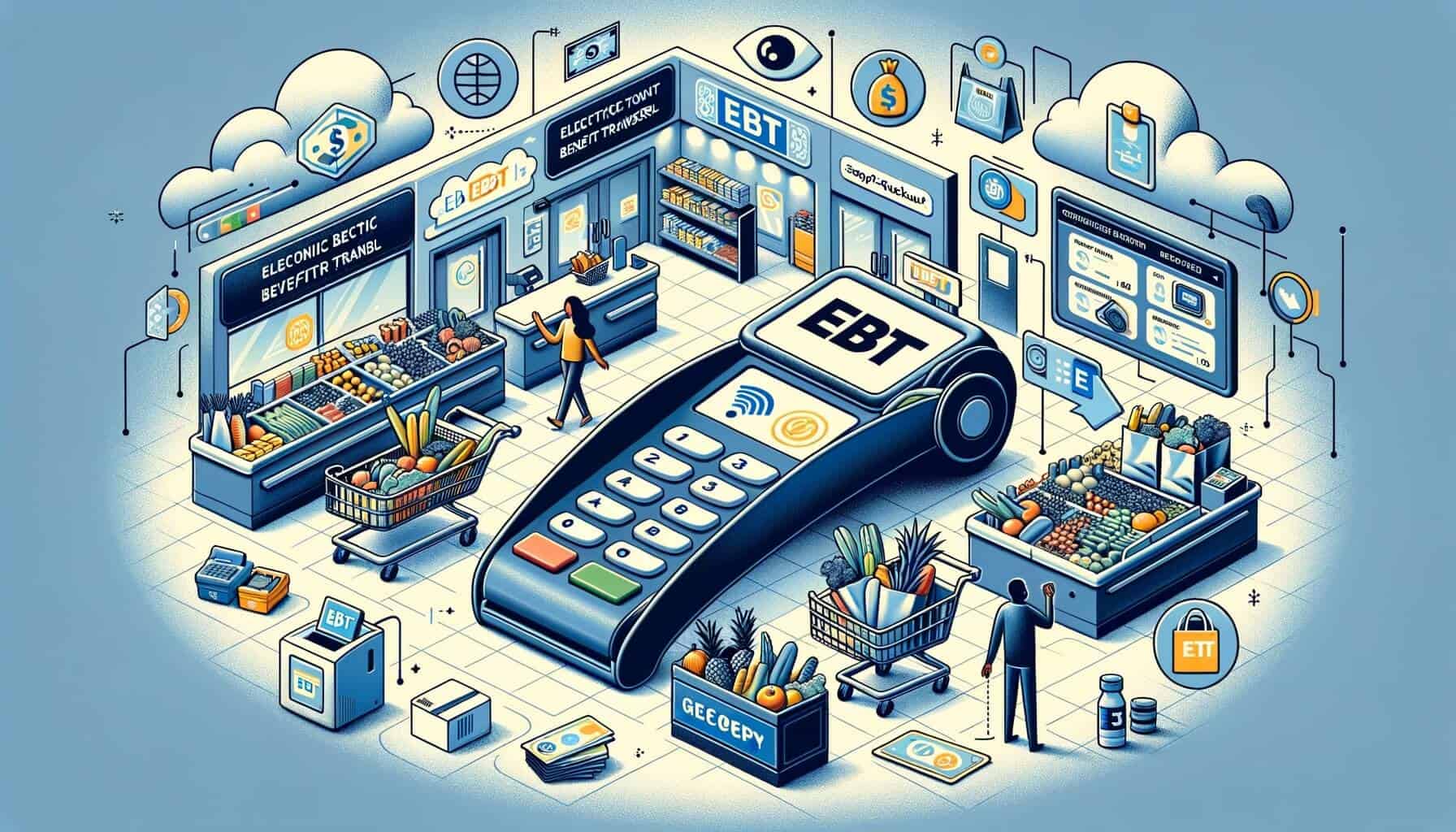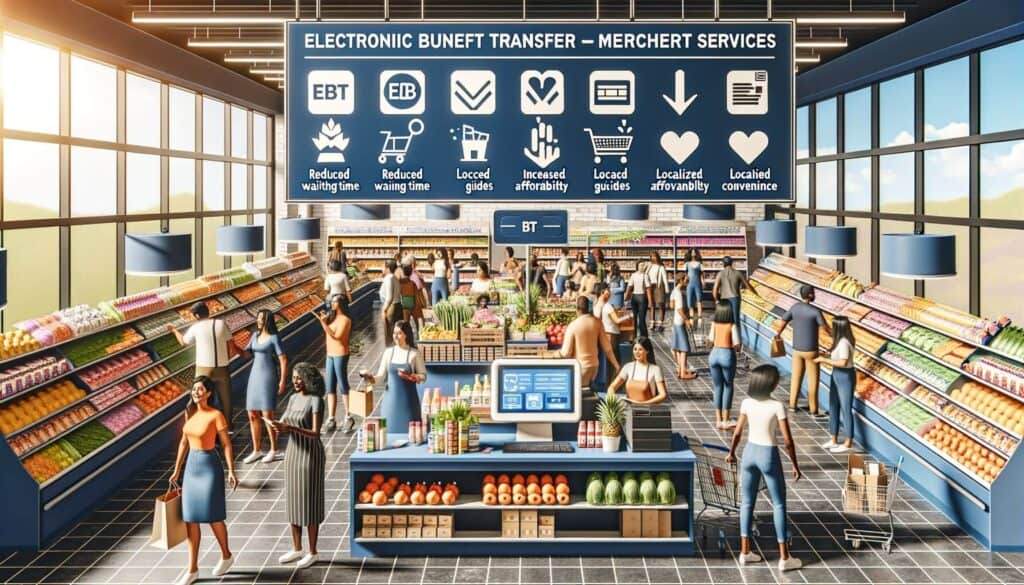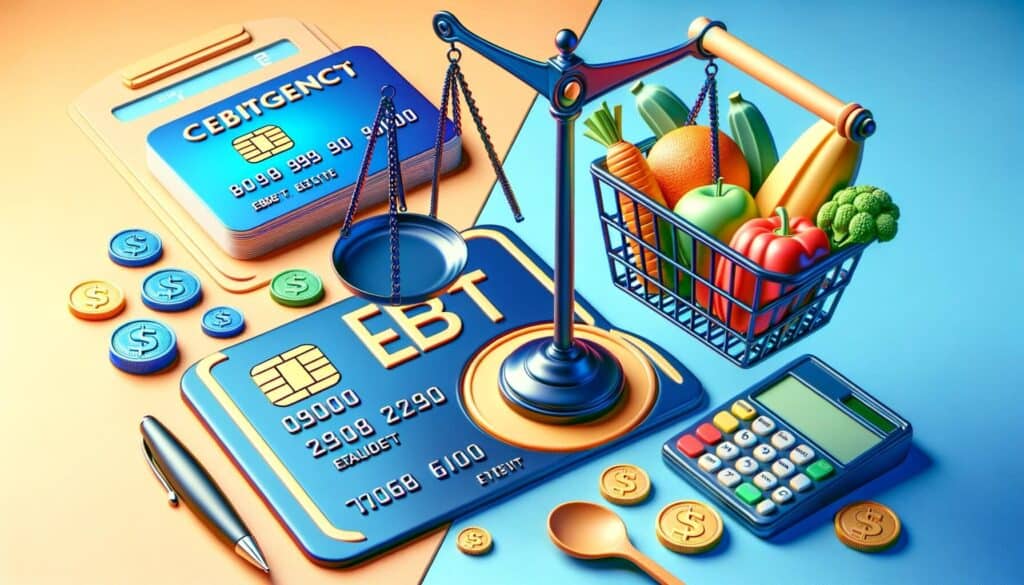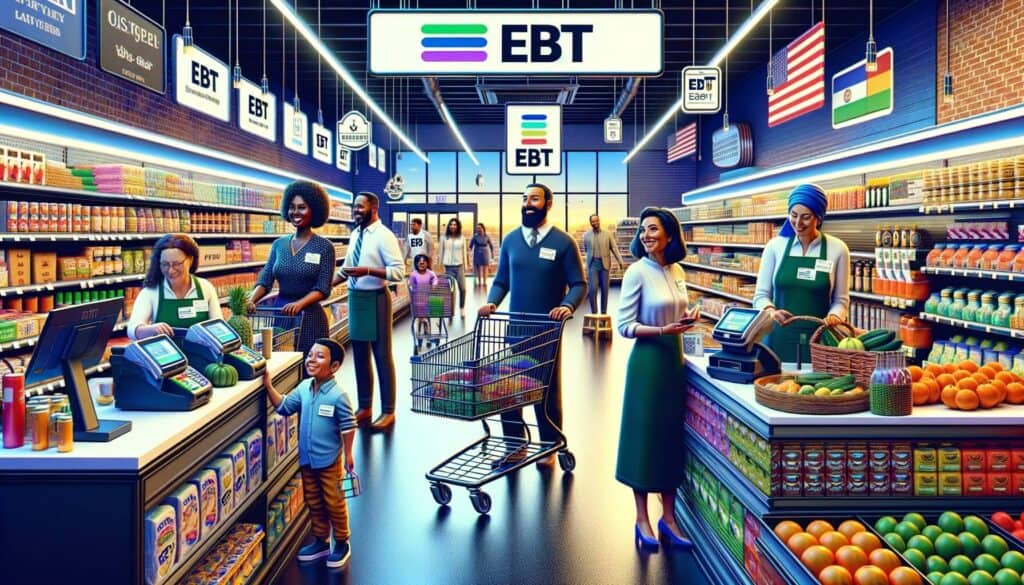
By Sharon Watson January 30, 2025
In today’s digital age, electronic payment methods have become increasingly popular, and grocery stores are no exception. Electronic Benefit Transfer (EBT) merchant services have emerged as a crucial tool for grocery stores to cater to a wider customer base and streamline their payment processes.
This comprehensive guide will delve into the world of EBT merchant services, exploring what they are, how they work, and why they are essential for grocery stores.
What are EBT Merchant Services and How Do They Work?

EBT merchant services are electronic payment processing systems that enable grocery stores to accept payments from customers using Electronic Benefit Transfer (EBT) cards. EBT cards are issued to individuals and families who qualify for government assistance programs such as the Supplemental Nutrition Assistance Program (SNAP). These cards function similarly to debit cards, allowing users to access their benefits and make purchases at authorized retailers.
To accept EBT payments, grocery stores must partner with an EBT merchant service provider. These providers facilitate the processing of EBT transactions, ensuring that funds are transferred securely and efficiently. When a customer makes a purchase using their EBT card, the transaction is authorized by the EBT merchant service provider, and the funds are deducted from the customer’s account and transferred to the store’s account.
Benefits of Implementing EBT Merchant Services in Grocery Stores

Implementing EBT merchant services in grocery stores offers a multitude of benefits for both the store and its customers. Let’s explore some of the key advantages:
1. Expanding Customer Base: By accepting EBT payments, grocery stores can cater to a broader customer base, including individuals and families who rely on government assistance programs. This not only increases the store’s revenue potential but also promotes inclusivity and accessibility.
2. Streamlined Payment Process: EBT merchant services simplify the payment process for both customers and store employees. Customers can conveniently make purchases using their EBT cards, eliminating the need for cash transactions. Store employees can process EBT payments seamlessly, reducing the time and effort required for manual payment handling.
3. Increased Sales: Accepting EBT payments can lead to increased sales for grocery stores. Customers who rely on government assistance programs often have limited financial resources, and accepting EBT payments allows them to purchase essential groceries without any financial barriers. This, in turn, boosts the store’s sales volume.
4. Enhanced Security: EBT merchant services prioritize security, ensuring that transactions are processed securely and customer information is protected. These services utilize encryption technology and adhere to strict security protocols, minimizing the risk of fraud or data breaches.
5. Improved Efficiency: EBT merchant services automate the payment process, reducing the need for manual calculations and paperwork. This improves overall efficiency in the store, allowing employees to focus on other important tasks such as customer service and inventory management.
How to Choose the Right EBT Merchant Service Provider for Your Grocery Store

Selecting the right EBT merchant service provider is crucial for the smooth operation of EBT payments in your grocery store. Here are some factors to consider when choosing a provider:
1. Compatibility: Ensure that the EBT merchant service provider is compatible with your existing point-of-sale (POS) system. Compatibility issues can lead to technical glitches and hinder the payment process.
2. Pricing Structure: Evaluate the pricing structure of different EBT merchant service providers. Look for providers that offer transparent pricing with no hidden fees. Consider factors such as transaction fees, monthly fees, and equipment costs.
3. Customer Support: Opt for a provider that offers reliable customer support. In case of any technical issues or concerns, prompt assistance is essential to minimize disruptions in the payment process.
4. Integration Options: Consider the integration options offered by the EBT merchant service provider. Seamless integration with your existing systems and software can streamline operations and enhance efficiency.
5. Security Measures: Prioritize providers that prioritize security. Look for features such as encryption technology, fraud detection, and compliance with Payment Card Industry Data Security Standard (PCI DSS) requirements.
Step-by-Step Guide to Setting Up EBT Merchant Services in Your Grocery Store

Setting up EBT merchant services in your grocery store involves several steps. Follow this step-by-step guide to ensure a smooth implementation process:
1. Research EBT Merchant Service Providers: Conduct thorough research to identify reputable EBT merchant service providers. Consider factors such as pricing, compatibility, and security measures.
2. Contact Potential Providers: Reach out to the shortlisted EBT merchant service providers and inquire about their services. Request detailed information about their offerings, pricing, and integration options.
3. Evaluate Pricing and Terms: Compare the pricing structures and terms of different providers. Consider factors such as transaction fees, monthly fees, and equipment costs. Choose a provider that offers competitive pricing and favorable terms.
4. Sign Up and Provide Documentation: Once you have selected a provider, sign up for their services. You will likely be required to provide documentation such as business licenses, tax identification numbers, and bank account information.
5. Obtain Necessary Equipment: Depending on the provider, you may need to obtain specific equipment to process EBT payments. This can include card readers, PIN pads, or software updates for your existing POS system.
6. Train Employees: Ensure that your employees are trained on how to process EBT payments using the new equipment or software. Familiarize them with the EBT transaction process and any specific guidelines provided by the EBT merchant service provider.
7. Test the System: Before fully implementing EBT payments, conduct thorough testing to ensure that the system is functioning correctly. Process test transactions to verify that funds are being transferred accurately and that receipts are generated correctly.
8. Promote EBT Acceptance: Once the system is up and running, promote the acceptance of EBT payments in your grocery store. Display signage and inform customers about the availability of EBT payments to encourage usage.
Ensuring Compliance and Security with EBT Merchant Services
Compliance and security are paramount when implementing EBT merchant services in grocery stores. Here are some measures to ensure compliance and maintain security:
1. PCI DSS Compliance: Ensure that your EBT merchant service provider is compliant with the Payment Card Industry Data Security Standard (PCI DSS). This standard outlines security requirements for organizations that handle cardholder data.
2. Encryption Technology: Utilize encryption technology to protect sensitive customer information during EBT transactions. Encryption ensures that data is securely transmitted and cannot be intercepted by unauthorized parties.
3. Fraud Detection and Prevention: Implement fraud detection and prevention measures to safeguard against fraudulent EBT transactions. This can include real-time monitoring, transaction verification, and suspicious activity alerts.
4. Employee Training: Train your employees on security best practices and the importance of handling EBT transactions securely. Educate them on how to identify and report any suspicious activity or potential security breaches.
5. Regular Security Audits: Conduct regular security audits to identify any vulnerabilities in your EBT payment system. This can involve reviewing access controls, monitoring logs, and performing penetration testing.
Maximizing Efficiency and Customer Satisfaction with EBT Merchant Services
EBT merchant services can significantly enhance efficiency and customer satisfaction in grocery stores. Here are some strategies to maximize these benefits:
1. Streamline Checkout Process: Optimize your checkout process to ensure quick and efficient EBT transactions. Train your employees to handle EBT payments swiftly and provide clear instructions to customers on how to use their EBT cards.
2. Offer Additional Services: Consider offering additional services to EBT customers to enhance their shopping experience. This can include providing information on nutrition, offering recipe suggestions, or hosting educational workshops on healthy eating.
3. Provide Clear Information: Display clear signage and provide information to customers about the availability of EBT payments in your store. Ensure that customers understand how to use their EBT cards and any limitations or restrictions that may apply.
4. Improve Inventory Management: Utilize the data generated from EBT transactions to improve inventory management. Analyze purchasing patterns and trends to optimize stock levels and ensure that essential items are always available.
5. Gather Customer Feedback: Regularly seek feedback from EBT customers to identify areas for improvement. This can be done through surveys, suggestion boxes, or online feedback forms. Use this feedback to make necessary adjustments and enhance the overall customer experience.
Common Challenges and Solutions in Implementing EBT Merchant Services for Grocery Stores
Implementing EBT merchant services in grocery stores can come with its fair share of challenges. Here are some common challenges and their potential solutions:
1. Technical Issues: Technical glitches or compatibility issues can disrupt the EBT payment process. To mitigate this, ensure that your EBT merchant service provider offers reliable technical support and prompt assistance in case of any issues.
2. Training Employees: Training employees on how to process EBT payments and use the new equipment or software can be time-consuming. Develop comprehensive training materials and conduct regular refresher sessions to ensure that employees are confident in handling EBT transactions.
3. Compliance Requirements: Compliance with regulations and security standards can be complex. Partner with an EBT merchant service provider that prioritizes compliance and provides guidance on meeting regulatory requirements.
4. Limited Connectivity: In some areas, limited internet connectivity can pose challenges for processing EBT transactions. Explore options such as mobile hotspots or backup internet connections to ensure uninterrupted service.
5. Customer Education: Some customers may be unfamiliar with EBT payments or unsure of how to use their EBT cards. Provide clear instructions and offer assistance to ensure that customers feel comfortable and confident in making EBT transactions.
Frequently Asked Questions (FAQs) about EBT Merchant Services for Grocery Stores
1. What is the difference between EBT and SNAP?
EBT (Electronic Benefit Transfer) refers to the electronic payment system used to distribute government benefits, including SNAP (Supplemental Nutrition Assistance Program). SNAP is a federal assistance program that provides eligible low-income individuals and families with funds to purchase food.
2. Can EBT cards be used for non-food items in grocery stores?
EBT cards can only be used to purchase eligible food items in authorized grocery stores. Non-food items such as toiletries, cleaning supplies, and pet food are generally not eligible for purchase with EBT funds.
3. Can EBT cards be used for online grocery shopping?
Yes, EBT cards can be used for online grocery shopping in some states. The USDA has launched a pilot program called the Online Purchasing Pilot, which allows SNAP participants to use their EBT cards to make online purchases from participating retailers.
4. Can EBT merchant services be used for other types of businesses?
While EBT merchant services are primarily used by grocery stores, they can also be utilized by other types of businesses that sell eligible food items, such as farmers’ markets and convenience stores.
5. Are EBT transactions subject to sales tax?
EBT transactions are generally exempt from sales tax, as they involve the purchase of essential food items. However, it is important to consult local tax regulations to ensure compliance.
Conclusion
EBT merchant services have become essential for grocery stores in today’s digital era. By accepting EBT payments, grocery stores can expand their customer base, streamline their payment processes, and increase sales. Choosing the right EBT merchant service provider and ensuring compliance and security are crucial steps in implementing EBT payments successfully. By maximizing efficiency and customer satisfaction, grocery stores can reap the numerous benefits that EBT merchant services offer. Despite the challenges that may arise, with proper planning and execution, grocery stores can effectively leverage EBT merchant services to enhance their operations and cater to a diverse range of customers.